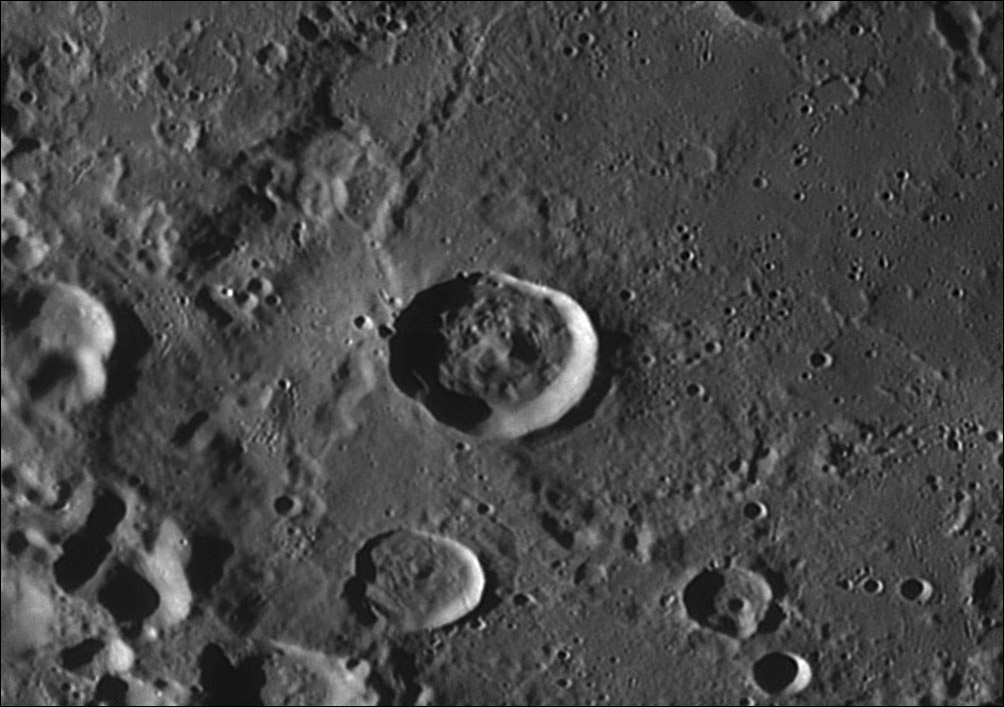February 9, 2012
Splattered

image by Stefan Buda, Melbourne, Australia
Hell is a 33 km wide crater that is somewhat anomalous in this scene - it is a primary impact crater. In this context primary means that it was formed by the impact of a projectile coming from deep space. A secondary impact crater is formed when the ejecta from an impact event does not have enough velocity to escape the Moon's pull of gravity and crashes into the lunar surface. Because the lunar escape velocity is only 2.4 km/s secondary craters are formed by lower energy than similar mass primaries. Addiitonally, a primary crater is normally formed by a single projectile, but ejecta from a just formed primary crater contains streams of material (traced by rays) that often fall as clumps or in lines. There is abundant evidence in Stefan's image for secondaries. Two tight clusters of very small secondaries are visible just to the southwest of Hell. These pits probably formed by small packets of ejecta from Tycho. Other likely clusters with slightly larger members occur to the northeast of Hell. Part of a linear crater chain is just north of Hell. This is too old and battered to be from Tycho and it isn't radial to it; its source primary is not identified yet. Near the southwest corner of the image are two craters that seem to share a common wall. That is a characteristic of simultaneous formation. Other likely secondaries in line with these two occur out the image to the northwest; based on the large size of these craters this is probably a secondary chain from a basin. The alignment doesn't point near the center of Imbrium but passes along the west of that big basin. Imbrium's secondary chains and radial features are not all actually radial to one center point so these possibly could be Imbrium secondaries. They are nearly radial to the nearby Nubium Basin, but the secondaries look too new to come from such an ancient basin, and usually large secondary chains are not so close to their source basin. When looking at any lunar image, especially one showing the highlands, always be on the look out for secondaries, which are many time more numerous than primaries.
Chuck Wood
Technical Details
1-20-1, 1955UT. 16" Dall-Kirkham telescope with a DMK21AU04 camera. About 500 frames were used from 1300 for each of 4 panels. Processing with Registax6, Canon Photo Stitch and Iris.
Related Links
Rükl plate 64
Yesterday's LPOD: Chinese Moon
Tomorrow's LPOD: Cold Moments of Great Views
COMMENTS?
Register, Log in, and join in the comments.



